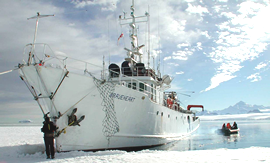Some of you have asked what other methods – apart from rotenone and air lifting – we’re applying in the water to catch our growing collection of fish species and marine invertebrates, so here’s how it’s done in deeper waters.
While rotenone is a good way to collect small cryptic fish that live on rocky reefs in water shallower than 30 metres (the deepest we are diving), Clinton has had to resort to more traditional fishing methods to catch the deeper water species he is interested in.
This afternoon, while the divers were working near Cheeseman, the Braveheart headed out east of the island to water that was about 230 metres deep. They put out a ‘drop line’, which is a long line with about 30 baited hooks, weighted at each end by an anchor so it sinks to the bottom. Clinton was hoping to catch skates (which he didn’t manage to find) and also small sharks (which he did manage to catch – which made him very happy!).
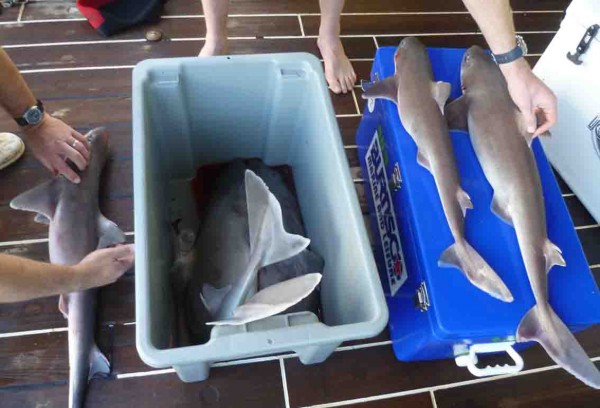
A shark by any other name: two species of spiny dogfish
There are two species of sharks in the photo above – they are both species of spiny dogfish. The two to the right are the Kermadec spiny dogfish, and the ones in the bin and to the left are larger Griffin’s spiny dogfish.
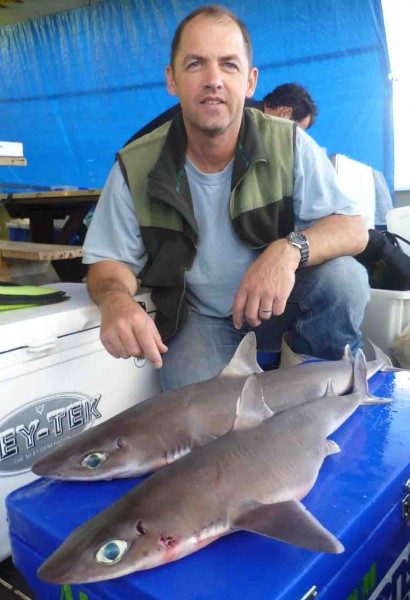
Clinton with the endemic Kermadec spiny dogfish – an important specimen find for this expedition
Clinton and a colleague recently described the endemic Kermadec spiny dogfish (Squalus raoulensis) from just two specimens, so he was delighted to get several more specimens. Like all deep water sharks they have large blue eyes, which reflect light like cat’s eyes and help them hunt in the dark.
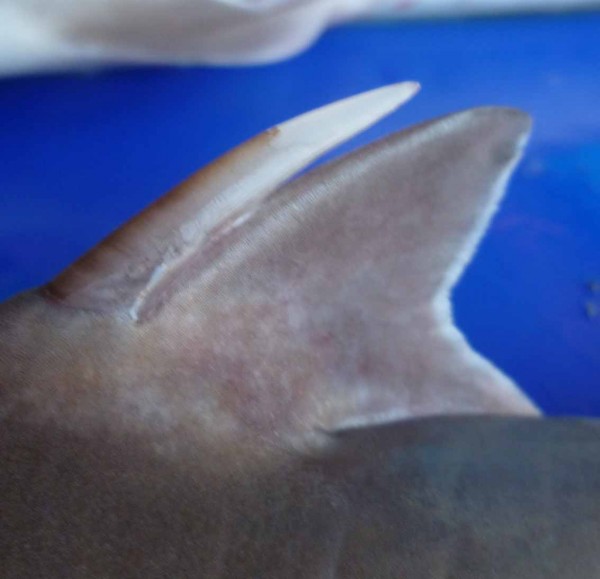
Not for cuddling: the spiny dogfish live up to their name with impressive spines
It’s easy to see the spines from which they get their name!
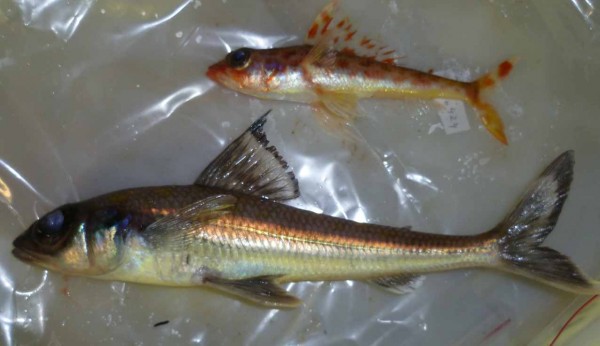
Cucumber and a fish called “sp” – the larger fish is a magpie cucumberfish, named for its smell when it’s freshly caught, and the little one belongs to a group of fish known as Sargeant Bakers but it’s yet to be described
Carl and Clinton then did a spot of rod and reel fishing, and it was Carl’s turn to be delighted. From 230 metres deep he pulled up two new records. The magpie cucumberfish (Paraulopus okamurai) is the larger fish in the photo, and belongs to a group of fish that apparently smell like cucumber when freshly caught. The smaller fish (Hime sp) belongs to a group of fish known as Sargeant Bakers – it is a known but not yet described fish, so it is referred to as sp. as it doesn’t yet have a species name.
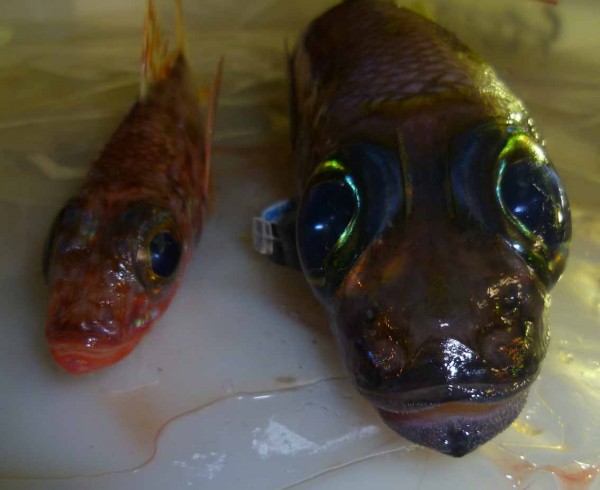
Ole big eyes: the as-yet-unnamed fish and the magpie cucumberfish are new records for the expedition. The big eyes help them see in the deep, dark waters they live in
Ole big eyes: the as-yet-unnamed fish and the magpie cucumberfish are new records for the expedition. The big eyes help them see in the deep, dark waters they live in












